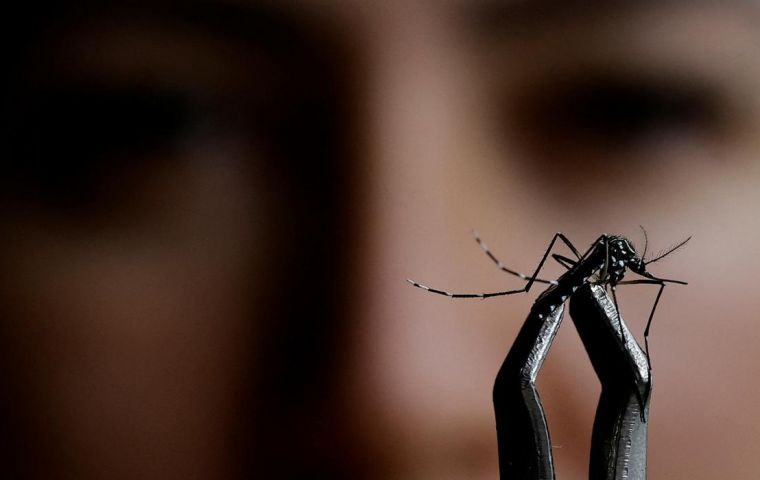MercoPress. South Atlantic News Agency
PAHO issues bulletin regarding risks of Oropouche fever spreading
 The first two deaths due to Oropouche fever were recorded this year in Brazil
The first two deaths due to Oropouche fever were recorded this year in Brazil The Pan American Health Organization (PAHO) issued a bulletin on Saturday warning of the risks of vertical transmission of Oropouche fever from pregnant women to their fetuses, Agencia Brasil reported.
The regional branch of the World Health Organization (WHO) based its decision on “recent highly worrying changes” in the clinical and epidemiological characteristics of the disease, including the recording of cases in venues outside the so-called endemic regions, it was explained.
Also taken into consideration for the issuance of the high-level alert were two deaths in the Brazilian State of São Paulo. In addition, PAHO monitors fetal abortions and cases of newborns with anencephaly that could be related to the infection.
“Recognizing that these observations are still in the early stages of research and that the true pathway of the disease is still unknown, the risk level for the region has been raised to high,” PAHO's document read.
“All this based on the current and available information, with a moderate level of confidence and with great caution,” it went on.
According to the bulletin, the criteria considered to update the regional risk level for Oropouche fever include potential risk to human health.
The clinical presentation of the virus in most cases varies from mild to moderate with self-limited symptoms that usually resolve within seven days. Although complications are rare, sporadic cases of septic meningitis have been documented. More recently, two cases of deaths associated with the virus were reported in Brazil. They were the first cases of deaths associated with the disease in the world.
On July 12, Brazil informed PAHO about potential cases of vertical transmission and its consequences. On July 30, five potential cases of vertical transmission of the virus were reported in Brazil, including four cases of fetal death and one case of spontaneous abortion in the state of Pernambuco, as well as four cases of newborns with microcephaly in the states of Acre and Pará. Investigations are in progress.
Between Jan. 1 and July 30, 2024, 8,078 confirmed cases had been reported in at least five countries in the Americas, including Bolivia (356 cases), Brazil (7,284 cases), Colombia (74 cases), Cuba (74 cases) and Peru (290 cases). In Brazil, 76% of the cases were reported in the Amazon.
According to PAHO, at least 10 Brazilian states outside the Amazon region have already confirmed autochthonous or local transmission of Oropouche fever, some of them in an unprecedented way for the disease. “This information suggests that, in the last quarter, cases have been reported in new areas and new countries, thus signaling the expansion of the virus throughout the Americas”.
“Since its identification in 1955, the virus has caused outbreaks in several countries in South America and the Amazon region, largely due to the vector Culicoides paraensis, the potential vector Culex and its hosts, such as prey and primates.”
“The risk of vector propagation and, consequently, of the transmission of Oropouche fever is increasing due to climatic changes, deforestation, uncontrolled and unplanned urbanization, and other human activities that affect the habitat and favor the intervals between vectors and hosts. So far, there is no evidence of human-to-human transmission of the virus,” concluded PAHO.




Top Comments
Disclaimer & comment rulesCommenting for this story is now closed.
If you have a Facebook account, become a fan and comment on our Facebook Page!